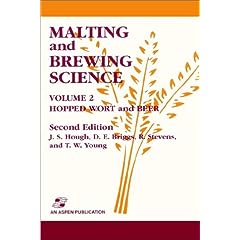It could be considered that the flavour component of the extracted compounds is more closely related to the weight of grain per volume of runnings, rather than a function of total sugars, as some sugars are neutral flavoured. So, for two beers of the same grist composition, that have the same OG and volume, but differ in the efficiency, the lower efficiency beer will require more grain (to achieve the same OG, for the same volume). So the grain weight to volume is higher than for the equivilent beer with a lower efficiency.......as it has more grain (for the same volume and OG), it could be theorised that it would therefore have a higher amount of compounds directly relating to flavour than it's higher efficiency counterpart.
That's the theory of it, anyway. Just a postulation, but one that (to me at least) has some logic to it, and from my own results and experiences, I would tend to agree with.....I'm not firmly commited, because I don't believe there's enough hard data to prove or disprove the hypothesis. But I'm inclined to agree that it's quite likely.





